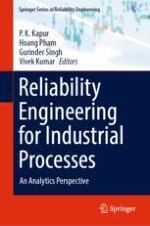2024 | OriginalPaper | Buchkapitel
Fault Removal Efficiency: A Key Driver in Software Reliability Growth Modeling
verfasst von : Umashankar Samal, Ajay Kumar
Erschienen in: Reliability Engineering for Industrial Processes
Verlag: Springer Nature Switzerland
Aktivieren Sie unsere intelligente Suche, um passende Fachinhalte oder Patente zu finden.
Wählen Sie Textabschnitte aus um mit Künstlicher Intelligenz passenden Patente zu finden. powered by
Markieren Sie Textabschnitte, um KI-gestützt weitere passende Inhalte zu finden. powered by
